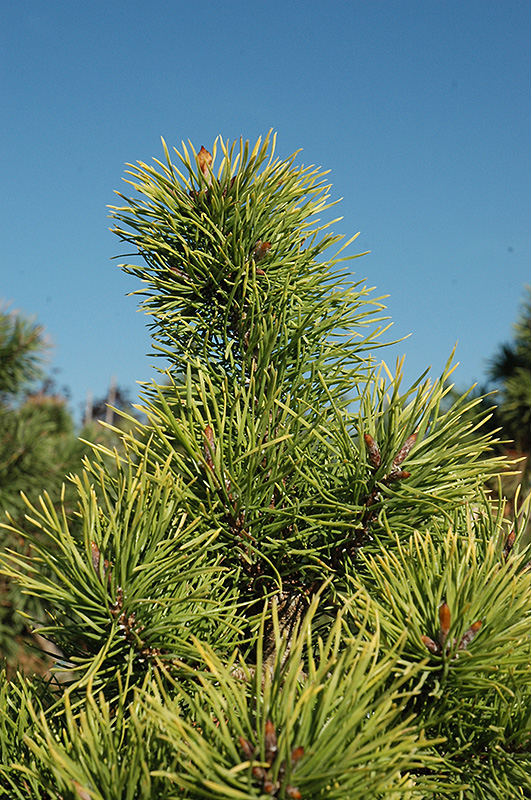>> Home
Chief Joseph Lodgepole Pine
Pinus contorta 'Chief Joseph'
Height: 6 feet
Spread: 3 feet
Sunlight:
![]()
Hardiness Zone: 4
Description:
This lovely dwarf pine is slow growing, pyrimidal and compact; most of the year the needles are colored green but in late fall and winter they turn to a spectacular gold; likes well drained soil and will shed some needles througout summer
Ornamental Features
Chief Joseph Lodgepole Pine is a dwarf conifer which is primarily valued in the landscape or garden for its distinctively pyramidal habit of growth. It has rich green evergreen foliage. The needles turn an outstanding gold in the fall, which persists throughout the winter.
Landscape Attributes
Chief Joseph Lodgepole Pine is a dense multi-stemmed evergreen shrub with a distinctive and refined pyramidal form. Its relatively fine texture sets it apart from other landscape plants with less refined foliage.
This is a relatively low maintenance shrub. When pruning is necessary, it is recommended to only trim back the new growth of the current season, other than to remove any dieback. It has no significant negative characteristics.
Chief Joseph Lodgepole Pine is recommended for the following landscape applications;
- Accent
- Mass Planting
- General Garden Use
Planting & Growing
Chief Joseph Lodgepole Pine will grow to be about 6 feet tall at maturity, with a spread of 3 feet. It tends to fill out right to the ground and therefore doesn't necessarily require facer plants in front, and is suitable for planting under power lines. It grows at a slow rate, and under ideal conditions can be expected to live for 40 years or more.
This shrub should only be grown in full sunlight. It prefers dry to average moisture levels with very well-drained soil, and will often die in standing water. It is considered to be drought-tolerant, and thus makes an ideal choice for xeriscaping or the moisture-conserving landscape. It is not particular as to soil type or pH. It is highly tolerant of urban pollution and will even thrive in inner city environments. This is a selection of a native North American species.
